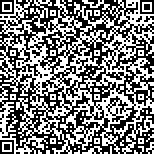| 引用本文: | 王美霞,李宏,李珏,范晓季,张力,郑小玲,马云婷,庞襄伟,车阳,王庭璋.不同16S rRNA片段长度在微生物鉴定中鉴定能力的比较研究[J].中国现代应用药学,2022,39(21):2894-2900. |
| WANG Meixia,LI Hong,LI Jue,FAN Xiaoji,ZHANG Li,ZHENG Xiaoling,MA Yunting,PANG Xiangwei,CHE Yang,WANG Tingzhang.Comparative Study on the Identification Ability of Different Length of 16S rRNA Fragments in Microbial Identification[J].Chin J Mod Appl Pharm(中国现代应用药学),2022,39(21):2894-2900. |
|
| |
|
|
| 本文已被:浏览 1632次 下载 1225次 |

码上扫一扫! |
|
|
| 不同16S rRNA片段长度在微生物鉴定中鉴定能力的比较研究 |
|
王美霞1, 李宏2, 李珏3, 范晓季1, 张力1, 郑小玲3, 马云婷1, 庞襄伟1, 车阳1, 王庭璋1,3
|
|
1.浙江省微生物研究所, 浙江省微生物技术与生物信息学研究重点实验室, 杭州 310012;2.中国合格评定国家认可中心, 北京 100062;3.浙江省食品药品检验研究院, 国家药品监督管理局药品微生物检测与预警重点实验室, 杭州 310052
|
|
| 摘要: |
| 目的 比较不同16S rRNA片段长度在微生物分类鉴定中的区别。方法 收集公共数据库NCBI中药典控制菌及相关细菌的16S rRNA序列,使用不同引物组合将16S rRNA序列截取为500 bp、1 000 bp、全长(~1 500 bp)的片段,通过BLAST进行序列比对并注释,获得相似度数据进行统计分析。结果 16S rRNA基因序列500 bp、1 000 bp、全长(~1 500 bp)均可以100%对药典控制菌及相关细菌鉴定到属水平,种水平的鉴定能力随着片段长度的增加而提高,其中500 bp长度可鉴定到90.73%的序列,1 000 bp可鉴定到94.04%的序列,全长(~1 500 bp)可鉴定到96.36%的序列。梭菌属、沙门氏菌属、大肠埃希菌、铜绿假单胞菌使用3种片段长度均可满足药典控制菌的鉴定需要,而金黄色葡萄球菌鉴定使用全长(~1 500 bp)的鉴定效果最佳。结论 16S rRNA序列片段长度越长鉴定效果越好,但在实际应用中考虑到成本因素推荐1 000 bp片段长度。大肠埃希菌和金黄色葡萄球菌在实际鉴定中可能鉴定程度率不高。 |
| 关键词: 16S rRNA 微生物鉴定 药典控制菌 一代测序 |
| DOI:10.13748/j.cnki.issn1007-7693.2022.21.028 |
| 分类号:R927.12 |
| 基金项目:浙江省基础公益研究计划(LGC22C010002) |
|
| Comparative Study on the Identification Ability of Different Length of 16S rRNA Fragments in Microbial Identification |
|
WANG Meixia1, LI Hong2, LI Jue3, FAN Xiaoji1, ZHANG Li1, ZHENG Xiaoling3, MA Yunting1, PANG Xiangwei1, CHE Yang1, WANG Tingzhang1,3
|
|
1.Key Laboratory of Microbial Technology and Bioinformatics of Zhejiang Province, Zhejiang Institute of Microbiology, Hangzhou 310012, China;2.China National Accreditation Institute for Conformity Assessment, Beijing 100062, China;3.NMPA Key Laboratory for Testing and Risk Warning of Pharmaceutical Microbiology, Zhejiang Institute for Food and Drug Control, Hangzhou 310052, China
|
| Abstract: |
| OBJECTIVE To investigate the difference between the ability in microbial identification when employing different length of 16S rRNA fragments. METHODS The 16S rRNA sequences of pharmacopoeia control bacteria and related bacteria were obtained from the NCBI, sequences were split into 500 bp, 1 000 bp, or full-length(~1 500 bp) fragments using different primer pairs, and the sequences were compared and annotated by BLAST to obtain similarity for further statistical analysis. RESULTS The 500 bp, 1 000 bp and full length(~1 500 bp) fragments were able to identify all the sequences to genus level, and the identification to species level was enhanced with the increase in fragments’ length, 90.73%, 94.04% and 96.36% sequences were able to be identified by 500 bp, 1 000 bp and full-length fragments(~1 500 bp), respectively. Clostridium spp., Salmonella spp., Escherichia coli and Pseudomonas aeruginosa could be identified with all three fragment lengths which requested by pharmacopeia, while Staphylococcus aureus was best identified using the full-length(~1 500 bp). CONCLUSION The longer length of the 16S rRNA fragment performed better in microorganism identification, whereas the 1 000 bp is recommended in practice due to its advantage in cost. Escherichia coli and Staphylococcus aureus might not be well identified in routine use. |
| Key words: 16S rRNA microorganism identification pharmacopoeia control bacteria first-generation sequencing |
|
|
|
|
